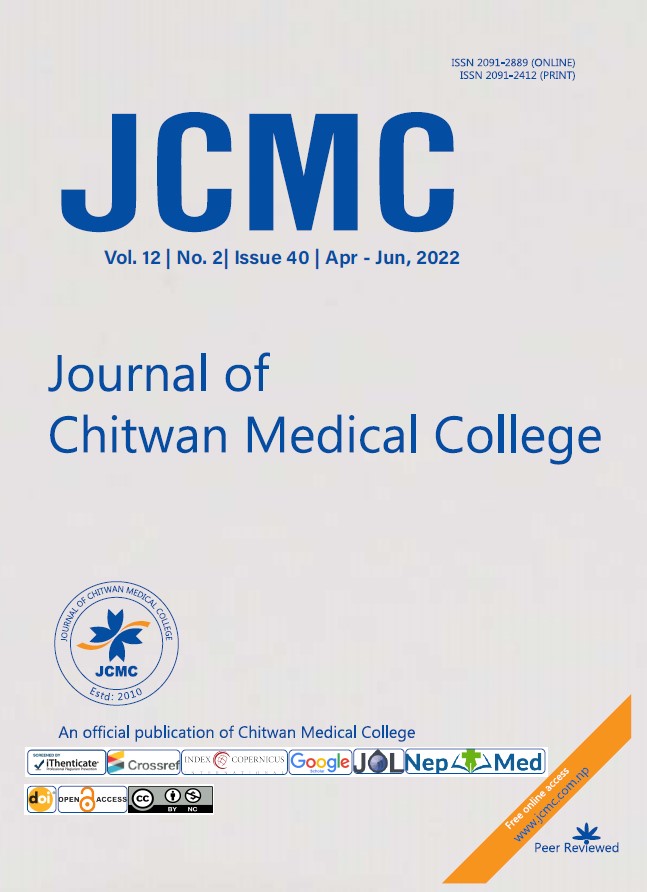PREVALENCE AND FACTORS ASSOCIATED WITH EXCESSIVE SCREEN TIME AMONG YOUNG CHILDREN OF 5 TO 9 YEARS IN POKHARA METROPOLITAN OF KASKI DISTRICT
Keywords:
Excessive screen time, Factors, Young ChildrenAbstract
Background: Excessive screen time has been increasing among children and adolescents globally. The study aimed to find out the prevalence and associated factors of excessive screen time among young children.
Methods: A cross-sectional study was conducted among children aged 5 to 9 years attending schools in Pokhara metropolitan. Face to face interview was conducted with one of the parents of 352 children. The study was carried out from March to October, 2020. Excessive screen time (ST) was defined as >2 hours screen viewing a day. Chi-square test and binary logistic regression were applied at 5% level of significance.
Results: Of total, 47.4% of children had ST>2 hours a day. Among socio-demographic factors, being a boy (adjusted odds ratio (AOR), 1.65; 95% CI,1.05-2.57)), living in nuclear family (AOR, 0.62; 95% CI, 0.39-0.99) and age of the children (AOR, 1.28; 95% CI,1.03-1.58) were significantly associated with excessive ST. Having television at home, parental ST, offering screen devices to children had increased likelihood of reporting excessive ST. Odds of reporting of excessive ST was 8.97 times higher among those who had one television at home as compared to those who do not have. Excessive ST was more than three times among those children whose parents offered screen devices to make them eat as well as to have free time for the parents themselves.
Conclusions: Few socio-demographic characteristics, parental ST and parental offering of screen devices were significantly associated with excessive ST. Interventions should target screen device accessibility and ST related behavior of parents.





